June 19, 2010
Cryptozoology’s Fathers
Happy Father’s Day to all the fathers out there.
But who is the “Father of Cryptozoology”? Actually, the debate over who is the “Father of Cryptozoology,” in reality, has raged on for years.

Illustration by Alika Lindbergh.
In 1955, Belgian zoologist Bernard Heuvelmans wrote a groundbreaking book in French, a now classic opus entitled (in English) On the Track of Unknown Animals. But in the 1955 French and the 1958 English editions, you will not find the word “cryptozoology,” in any language, in the text.
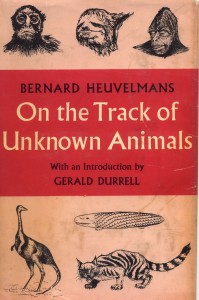
The first published use of the word “cryptozoology,” in French, occurred in 1959 in a book by wildlife biologist Lucien Blancou, dedicated to “Bernard Heuvelmans, master of cryptozoology.” At least, that is as far as we know.
But should the candidate for “father of cryptozoology,” be the person who actually worked the word into print in the first English-language book? The premiere utilization of the term “cryptozoological,” in English, was in 1961, in Abominable Snowmen: Legend Come to Life by Ivan T. Sanderson.
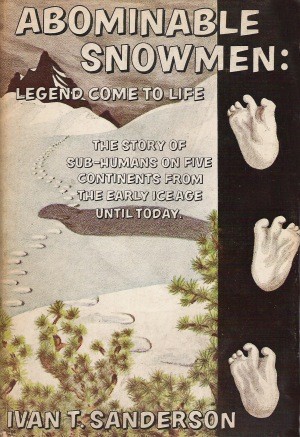
In Heuvelmans’s 1968 book In the Wake of the Sea Serpents, it is clear that the word “cryptozoology” had been around for perhaps over twenty years before it came into print in 1959. Speaking of two articles on water monsters written in 1947 and 1948 by Ivan T. Sanderson, Heuvelmans wrote: “When [Sanderson] was still a student he invented the word ‘cryptozoology,’ or the science of hidden animals, which I was to coin later, quite unaware that he had already done so.”
Intriguingly, this passage is missing from the French edition of Heuvelmans’ Sea Serpent book, and only exists in the English edition.
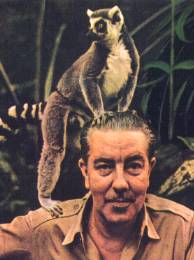
Heuvelmans is very open that it was Sanderson’s article in Saturday Evening Post in 1947, which stimulated him, Heuvelmans to undertake a study of unknown animals. After writing about jazz and doing some science articles, Heuvelmans was looking about for a project to devote his time and from which to obtain an income. He discovered that article, and thus stumbled into what would become “cryptozoology.” Ivan was the mentor to Bernard. But others have defended Heuvelmans’ status by noting he invented the “methodology of cryptozoology.”
Perhaps that is even in dispute, because the methodology for the surveying of the ethnoknown information from indigenous peoples has been around for a long time. Before there was cryptozoology, there was “romantic zoology,” which took as its objective to discover new animals based upon the testimony of native folks.
My friend and associate, Mark A. Hall, has made the case for some rather older “romantic natural historians,” as candidates for the first cryptozoologists and “fathers of cryptozoology.” Such names as A. C. Oudemans, Gunnar Olof Hylten-Cavallius, Karl Hagenbeck, Willy Ley, George Wendt, Rupert T. Gould, William H. Harkness, W. M. Gerald Russel, and Tom Slick, come to mind, although, of course, people like Russell and Slick were contemporaries of Sanderson and Heuvelmans.
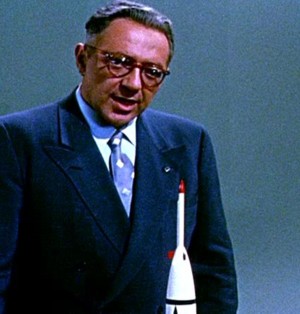
Willy Ley, a popular author who Heuvelmans would have also been aware of in Europe, was the successful, popular author of several books published before either Sanderson’s or Heuvelmans’ appeared, including The Lungfish and the Unicorn: An Excursion into Romantic Zoology (1941), The Lungfish, the Dodo, and the Unicorn (1948), Dragons in Amber: Further Adventures of a Romantic Naturalist (1951), and Salamanders and other Wonders (1955). Exotic Zoology, published in 1959, and honored via Matt Bille’s title of his now-defunct journal, was the compilation of several chapters on cryptozoological topics from Willy Ley’s previous books.
Heuvelmans personally considered Oudemans as the first initiator of the field of Cryptozoology.
Who is your nominee for the “Father of Cryptozoology”? Or the “grandfathers”?
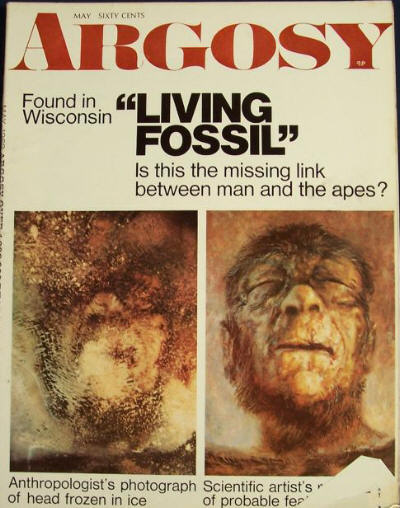
++++
If you would like to make a legacy donation to the International Cryptozoology Museum, your contributions go directly to our operating costs. Funding, new items, and time are always appreciated. If you would like to have direct contact about a major donation or becoming a volunteer with the director, Loren Coleman, please use the contact form here.
The ICM is a dedicated member of Portland, Maine’s Arts District and museum section of the city, and we encourage the patronizing of our neighborhood businesses, as we see the area change into a center for creative thought, adventure, and exploration. Thank you.
Deep appreciation, again!
The museum will be closed on Father’s Day, so we may be with our sons, who are traveling from far away to visit.
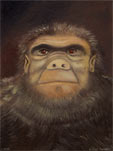
Ivan T. Sanderson’s and Bernard Heuvelmans’ mutual discovery, Homme Sauvage, from Guide Des Animaux Cachés (Guide to Hidden Animals), published in late October 2009, by author Philippe Coudray. One could say it was their “baby,” their “son.”
 About Loren Coleman
About Loren Coleman
Loren Coleman is one of the world’s leading cryptozoologists, some say “the” leading living cryptozoologist. Certainly, he is acknowledged as the current living American researcher and writer who has most popularized cryptozoology in the late 20th and early 21st centuries.
Starting his fieldwork and investigations in 1960, after traveling and trekking extensively in pursuit of cryptozoological mysteries, Coleman began writing to share his experiences in 1969. An honorary member of Ivan T. Sanderson’s Society for the Investigation of the Unexplained in the 1970s, Coleman has been bestowed with similar honorary memberships of the North Idaho College Cryptozoology Club in 1983, and in subsequent years, that of the British Columbia Scientific Cryptozoology Club, CryptoSafari International, and other international organizations. He was also a Life Member and Benefactor of the International Society of Cryptozoology (now-defunct).
Loren Coleman’s daily blog, as a member of the Cryptomundo Team, served as an ongoing avenue of communication for the ever-growing body of cryptozoo news from 2005 through 2013. He returned as an infrequent contributor beginning Halloween week of 2015.
Coleman is the founder in 2003, and current director of the International Cryptozoology Museum in Portland, Maine.
Email • Facebook • Twitter •
Filed under Classic Animals of Discovery, Cryptomundo Exclusive, CryptoZoo News, Cryptozoology, Men in Cryptozoology, Women in Cryptozoology, Year In Review







